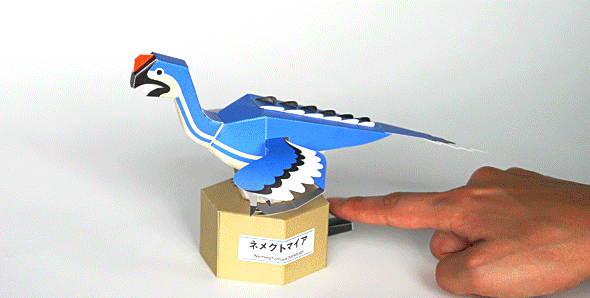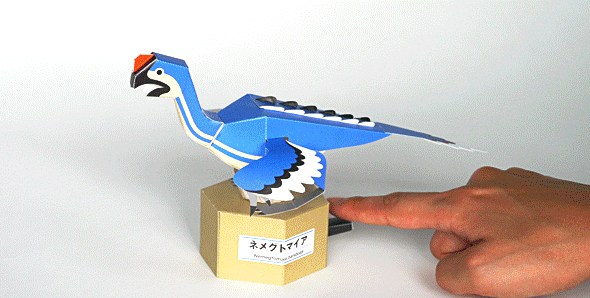- Thumbnail
-

- Resources
- brh.co.jp/
- Author
- JT Biohistory Research Hall
- Printed File Format
- Page(s)
- 2
- Part(s)
- 19
- Instruction Format
Sponsored:
Sponsored 2:
Nemegtomaia Barsboldi automata papercraft
Nemegtomaia is a genus of oviraptorid dinosaur from what is now Mongolia that lived in the Late Cretaceous Period, about 70 million years ago. The first specimen was found in 1996, and became the basis of the new genus and species N. barsboldi in 2004. The original genus name was Nemegtia, but this was changed to Nemegtomaia in 2005, as the former name was preoccupied. The first part of the generic name refers to the Nemegt Basin, where the animal was found, and the second part means "good mother", in reference to the fact that oviraptorids are known to have brooded their eggs. The specific name honours the palaeontologist Rinchen Barsbold. Two more specimens were found in 2007, one of which was found on top of a nest with eggs, but the dinosaur had received its genus name before it was found associated with eggs. If you move the karakuri, you can see the connection between parent and child.

Nemegtomaia is estimated to have been around 2 m (7 ft) in length, and to have weighed 40 kg (85 lb). As an oviraptorosaur, it would have been feathered. It had a deep, narrow, and short skull, with an arched crest. It was toothless, had a short snout with a parrot-like beak, and a pair of tooth-like projections on its palate. It had three fingers; the first was largest and bore a strong claw. Nemegtomaia is classified as a member of the oviraptorid subfamily Heyuanninae, and is the only known member of this group with a cranial crest. Though Nemegtomaia has been used to suggest that oviraptorosaurs were flightless birds, the clade is generally considered a group of non-avian dinosaurs.
Sponsored: Google Advertising
